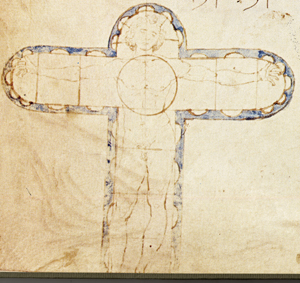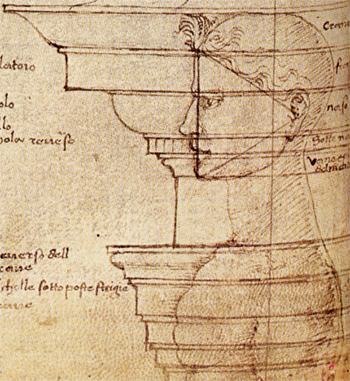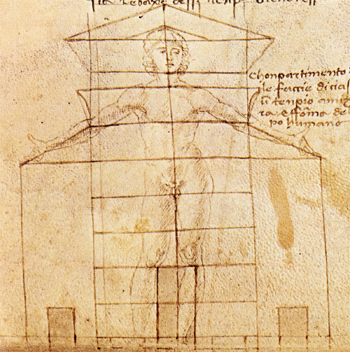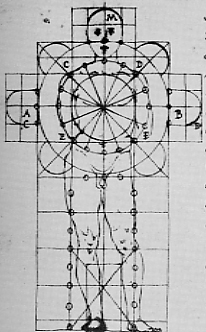
| welcome | ||||||||||||||
| history | ||||||||||||||
|
||||||||||||||
| reconstruction | ||||||||||||||
| today | ||||||||||||||
|
||||||||||||||
| links | ||||||||||||||
| about this site |



Renaissance archiects seem to have truly believed that "Man is the measure of all things."
“As Wittkower emphasizes, this is not evidence of an anthropocentric world view. Since man was made in the image of God, so it was believed the proportions exemplified in the humn form would reflect a divine and cosmic order" (Steadman 17).
Drawings by Francesco di Giorgio illustrate such proportional concepts directly
and vividly.
 |
| Source: Scanned from Trattato di architettura di Francesco di Giorgio Martini by Francesco di Giorgio |
 |
| Source: Scanned from Trattato di architettura di Francesco di Giorgio Martini by Francesco di Giorgio |
 |
| Source: Scanned from Trattato di architettura di Francesco di Giorgio Martini by Francesco di Giorgio |
 |
|
Source: Scanned from The Evolution of
Designs: Biological Analogy in Architecture and the Applied Arts
by Philip Steadman
|
"Francesco di Giorgio demonstrates by means of the inscribed human figure
how to weld together organically the centralized and the longitudinal parts
of such a church design. The centralized eastern end is developed from the
basic geometrical figures of circle and square" (Wittkower 10).
The Vitruvian Man was very much a part of this order and need for proper
proportion, "Order stands at the center of the received character of
the Italian Renaissance. The circle is the image of divine perfection, the
five Platonic solids the building blocks of the cosmos, and the human figure
the microcosm of that universe, a figure whose extensions area encompassed
by the circumscribed shapes of the circle and the square" (Turner 210).
"At one level, it is urged that the layout of the building match the body part for part. Vasari, for example, in his recommendations for the design of an ideal palace, compares the façade with the face, the central door with the mouth, the symmetrically placed windows with eyes, the courtyard with the body, staircases with the legs and arms…the typical proportional ratios to be detected in the measurements of the human figure and limbs are to be emplyed for sizing the elements of the building, without any sense at all of the plan or façade corresponding to the body in general disposition" (Steadman 17).